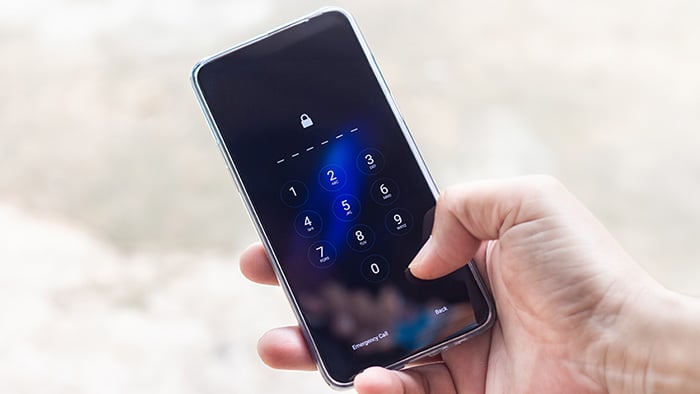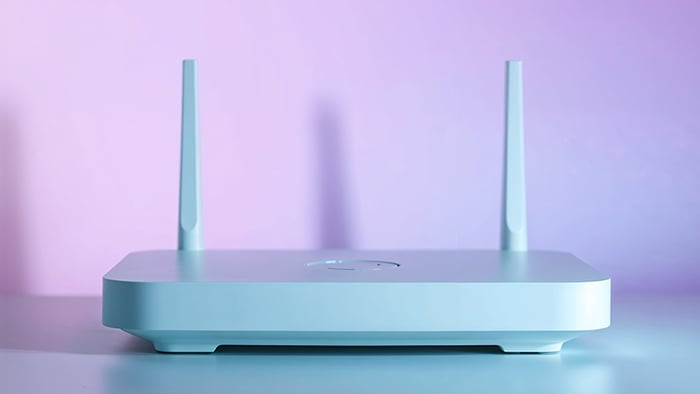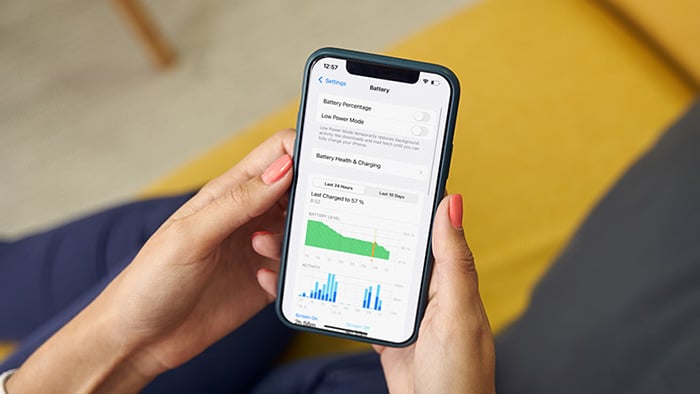What is rooting?
Rooting is the process of accessing and editing the root file directories of an Android device’s operating system. Access to root files is usually restricted by manufacturers and carriers to prevent users from damaging their devices. A rooted Android device offers the freedom of complete customization, along with all the attendant risks and dangers.
While it may sound like complex technical wizardry, to root a device is simply to attain full system administrator privileges. Android is derived from an operating system called Unix, in which the ultimate system admin account is named “root.” So by gaining unrestricted access to system folder locations, files, and commands on an Android device, the user essentially becomes the root.
For most people, the risks of rooting a phone are simply not worth it, especially given the functionality and flexibility of modern smartphones.
Just like jailbreaking an iOS device, rooting a phone removes all guardrails, and it may void your warranty, so you shouldn’t root an Android unless you know what you’re doing. Although it unlocks certain functionalities, it’s all too easy to cause irreparable damage to a rooted device, and your data may be particularly vulnerable if hackers find your lost phone.
So, is root access really worth it? Before deciding whether to root your Android phone, make sure you’re fully aware of what rooting is for and what a rooted Android device is capable of. Then, carefully consider the pros and cons involved.
 Rooting is the process of breaking through manufacturer restrictions to access the root file directories of an Android device.
Rooting is the process of breaking through manufacturer restrictions to access the root file directories of an Android device.
The risks of rooting Android devices
Having root access may be required by businesses, journalists, activists, or dissidents who need to alter device functionality, or install custom software. But doing so brings with it plenty of additional risks and inconveniences, and in the vast majority of use cases, the risks of rooting heavily outweigh the benefits.
Let’s take a closer look at the potential benefits and pitfalls of rooting an Android phone.
Why people root Android devices
Some individuals and organizations may choose to root an Android phone in order to:
-
Alter device appearance. A rooted phone or tablet can be customized down to every detail including your emojis, fonts, notifications, and icon styles — even the layout of the buttons.
-
Remove pre-installed apps. Rooting lets you clean up your phone by removing annoying default apps and other bloatware you don’t use. You can also more easily hide apps on Android you don’t want others to see.
-
Install unauthorized apps. Rooting an Android phone lets you install apps that aren’t available through official app stores like Google Play. And you can run root access applications that interact directly with Android system files.
-
Change device functionality. Phone manufacturers tweak Android’s base code using firmware that determines exactly how your device behaves. Rooting your Android phone or tablet unshackles you from the factory presets and lets you use custom firmware.
-
Underclock the processor. A rooted device can be underclocked to force it to run more slowly. This will reduce power consumption and increase battery life, but it comes at the expense of performance.
-
Overclock the processor. Just as you can overclock your PC’s GPU or CPU, you can speed up an Android by pushing the rooted phone’s processor beyond its official limits. But overclocking will also speed up battery degradation and may cause your phone to overheat.
-
Block ads. Rooting your device allows you to modify host files to block ads on browsers, YouTube, and elsewhere, freeing up bandwidth to boost your phone’s internet speed and letting you enjoy hassle-free browsing.
Dangers of rooting an Android device
Vulnerabilities and drawbacks associated with a rooted device include:
-
Disabling payment and banking apps. Most payment and banking apps are hard-coded to stop working if device tampering is detected. This helps prevent identity theft and fraud, but it doesn’t differentiate between legitimate modification and malicious hacking attempts.
-
Bricking. One wrong move when rooting around in your system code can easily lead to your device becoming “bricked.” A bricked phone is one that stops working, doesn’t respond to user inputs, and becomes utterly unusable — little more than a brick.
-
Lost functionality. Rooting cell phones can disable core features such as the camera or fingerprint scanner, or cause your favorite apps to glitch or stop working altogether. Such unwanted changes can be difficult or impossible to reverse.
-
Voided Warranty. Phone manufacturers in the US may automatically void your warranty the moment you try rooting your Android device. In the EU, your two-year statutory warranty is only voided by rooting if it can be proved to have caused a defect.
-
Security risks. Some of the built-in security features of the Android operating system may be disabled on a rooted device. And if it’s unable to install updates and security patches, the phone’s vulnerability to zero-day exploits gets more critical every day.
 The drawbacks of rooting an Android phone include lost functionality, a voided warranty, and increased security risks.
The drawbacks of rooting an Android phone include lost functionality, a voided warranty, and increased security risks.
How to root your Android device
For most people, the risks of rooting a phone are simply not worth it, especially given the functionality and flexibility of modern smartphones. Although we don’t recommend rooting, if you do attempt to root your Android phone or tablet, backup all your data first, and make absolutely sure you know what you’re doing.
Before you get started, you’ll need to make some system settings alterations by opening device Settings, and selecting About Phone. Then, under Software Information, find the Build Number of your phone and tap it 7 times to enable “developer mode.” You can now find Developer Options within the System menu. Toggle on both OEM Unlocking and USB Debugging.
Although the specific steps vary by device, once you’ve configured the developer options outlined above, you can root an Android phone or tablet by following this general process:
-
Unlock your device’s bootloader, which is the program responsible for booting your phone. Some brands such as Google, Motorola, and OnePlus allow you to unlock the bootloader officially, but depending on your carrier, this alone may still void the warranty.
-
After you unlock the bootloader, you can now “flash” your device by overwriting the stock read-only memory (ROM) of your Android device with a custom ROM of your choice.
-
It’s usually necessary to use third-party software to finish rooting your device. You’ll want to use a program that performs a “systemless root” and doesn’t touch any system files.
As always, be careful about which third-party apps to trust. Be particularly wary of those that claim to root your device in just a few clicks — these apps are commonly Trojans containing spyware. If you think you’ve been duped, take steps to remove spyware on your Android immediately.

Troubleshooting rooting issues
If you managed to “brick” your device or ran into other issues rooting your phone, you can try following these steps to troubleshoot the problem:
-
Boot your phone in recovery mode. Every phone boots into recovery mode differently. The software developer community XDA has a neat guide on how to boot different Android brands into recovery mode.
-
Clear the cache partition. This may be titled “wipe all data” or something similar.
-
Reboot your device and check to see if the issue has been resolved.
If clearing your Android cache and rebooting doesn’t work, try performing a full factory reset.
Still having problems? As a last resort, you can try reinstalling an operating system by connecting your phone to a PC, “fast booting” your device, and “flashing” your phone with either the stock ROM of your manufacturer or a custom ROM.
But, again, this should only be attempted by those with the necessary technical expertise. If you’ve already run into trouble attempting to root your phone, you should seek expert assistance to prevent damaging your device further.
Is rooting legal and safe?
Rooting is legal, but it’s certainly not safe. By overriding the built-in security safeguards the device manufacturer has put in place, you open yourself up to increased security risks that can cause permanent damage to your phone. If you notice any signs of phone hacking after rooting, run a full scan with a malware removal tool immediately.
Should you root your Android device?
Rooting your phone is not recommended due to the associated security risks and the potential to damage your phone’s functionality. Tampering with the operating system in this way is also very likely to void your phone’s warranty.
Of course, there are legitimate reasons to root an Android device: whistleblowers and journalists may want to configure an “untraceable” phone, or software engineers may need a completely unlocked device for testing purposes. But for the vast majority of users, rooting simply isn’t necessary or advisable.
Does rooting a phone void the warranty?
Depending on the device manufacturer, and where you purchased it, rooting an Android phone or tablet may void the warranty. That’s because rooting lets you disable built-in security protections intended to ensure the safe and normal operation of your device, which increases the risk of malfunction or malware infection.
Many US vendors and carriers stipulate that your warranty is voided the moment you gain root access to the operating system. Even in the EU, where warranties have greater legal protection, rooting may void a warranty if it can be shown that it directly resulted in a defect. So, if you’re thinking about rooting, always read the warranty information carefully and contact the manufacturer with any questions first.
What are the security risks of rooting an Android device?
Rooting an Android device leaves it much more exposed to malware attacks, hacking, and other security threats. Not only can tampering with Android’s sub-systems disable security features, but rooted phones stop receiving official security updates, meaning newly discovered bugs and weaknesses remain unpatched.
Another risk associated with rooting is that system administrator access undermines your phone’s compartmentalized data storage structure. That means that it’s easy to accidentally delete or corrupt important information. And without separated data storage, an unauthorized intruder can gain unfettered access to all the data stored on your device.
Give your Android device strong security protection
Any device that contains all your most sensitive information deserves the same safeguards that you do. That’s why we developed a powerful security app that can help keep your phone protected and running smoothly.
Built on top of an industry-leading threat-detection engine, Avast Mobile Security protects your device in real time against viruses and other malware, helping to strengthen your privacy and ensure smooth performance. Install Avast Mobile Security for free today.



 Rooting is the process of breaking through manufacturer restrictions to access the root file directories of an Android device.
Rooting is the process of breaking through manufacturer restrictions to access the root file directories of an Android device. The drawbacks of rooting an Android phone include lost functionality, a voided warranty, and increased security risks.
The drawbacks of rooting an Android phone include lost functionality, a voided warranty, and increased security risks.











